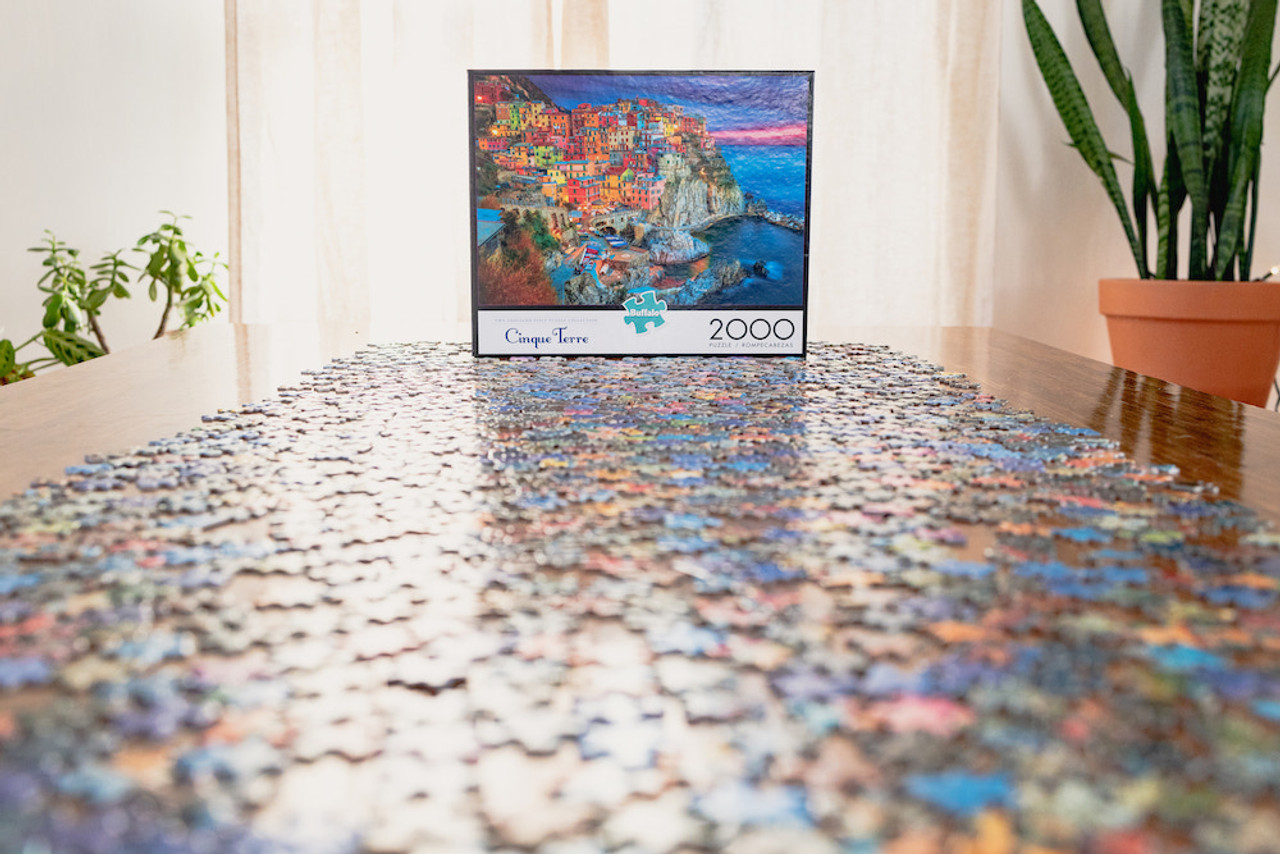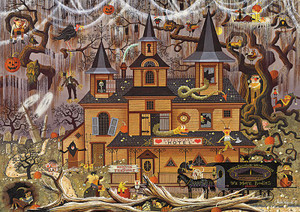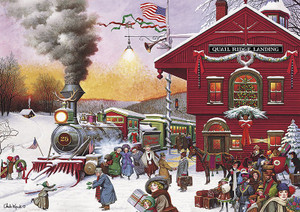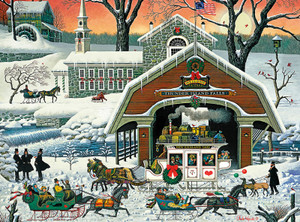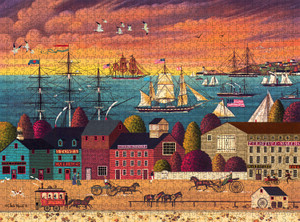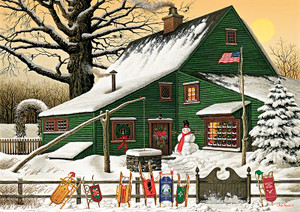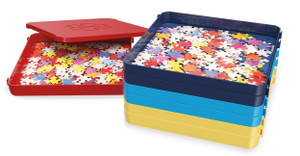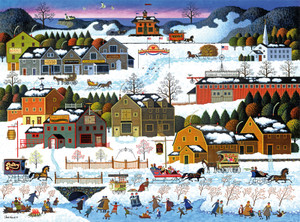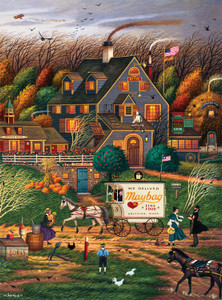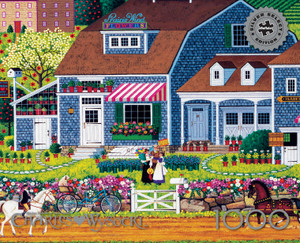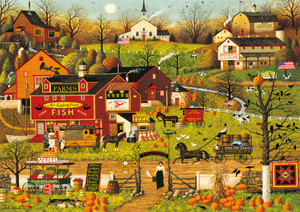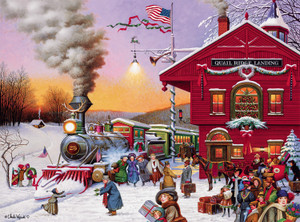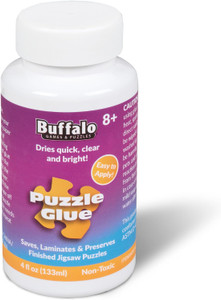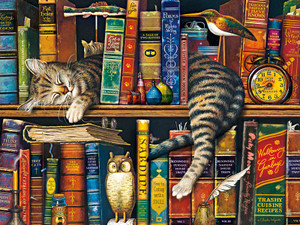Posted by Buffalo Games on Apr 13th 2022
Is It Cheating to Look at the Puzzle Box?
The debate about whether it’s cheating to refer to the final image of a jigsaw puzzle on its box while working on it seems like it’s been around forever. Puzzlers have been divided on this issue since puzzles in photo boxes became popular, and the debate still rages on.
Why is there so much debate over a question like this? Some people claim that looking at the picture of the completed puzzle on its box top is cheating because it tells a person where to put the pieces. Other people claim it’s not cheating because the picture is like a map that functions only as a visual guide.
The two camps both present strong arguments, but in the end, only you can decide what makes your puzzle-solving experience fun and fulfilling.
The Pro-Box Puzzlers
Plenty of avid puzzlers consider the photo on a puzzle box to be the key to the solution and not an instrument of cheating. After all, isn’t the photo on the box the reason people choose the puzzles they do?
Many support the idea that it’s not cheating to reference the box because if you can’t find where the pieces go, no amount of looking at the box will magically do it for you.
Many people who support using the box as a guide point out that puzzles are supposed to be challenging, and mind-enhancing, but not to the point where solving them becomes so frustrating your blood pressure starts to rise.
They argue that the average puzzler isn’t looking to be competitive or aggressive about putting their 500-piece puzzles together. They’re engaged in the activity for fun, relaxation, and accomplishment—not to beat world records.
The Puzzle Box Opposition
The opponents of consulting the puzzle box are just as vocal as the pro-boxers. The group members claim that using the box to help solve a puzzle is cheating. Many traditional puzzlers belong to this group; however, many competitive puzzlers consider utilizing the box as cheating.
In the strictest of definitions, cheating is “acting dishonestly or unfairly to gain an advantage, especially in a game.” This, of course, leads to the question of what people perceive as dishonest and unfair.
When puzzlers don’t use the box as a guide, it makes solving jigsaw puzzles more challenging. Although there are no rules listed inside puzzle boxes on how to “play” the puzzle, plenty of people still consider looking at the box cheating.
But is it cheating if there are no rules to break? You decide.
Jigsaw Puzzles and Competitions
Not all, but most jigsaw puzzle competitions allow competitors to look at the boxes. Generally, competitive puzzlers cannot look at the puzzle pieces beforehand, and puzzle boxes remain face-down until the timers start.
Some competitions explicitly ban looking at the boxes, whether the puzzle at hand is a 1,000-piece puzzle or a 100-piece puzzle. When they’re not allowed, the competition is said to have a “no box top” rule.
What’s the final verdict when it comes to most official competitions and jigsaw puzzle box tops? They ARE allowed.
Surveys: What Do the People Say?
Even though people are divided on whether using a box top while solving a puzzle is cheating, they agree on one thing: Using box tops makes solving jigsaw puzzles easier.
Various surveys have asked people whether they look at the tops of boxes while assembling a puzzle. Although the exact percentages of people responding each way vary from one survey to another, responses generally follow a similar pattern.
Just over 50% of those surveyed say that they do look at the box top. In addition, 30% of people reference the photo for help only if they get stuck. Finally, the remaining 20% of people surveyed say they absolutely do not check out the box.
Tips to Make Puzzle Solving Easier
It doesn’t matter if you enjoy working on jigsaw puzzles for adults that have 100 pieces or 5,000 pieces—you’re likely to get stuck at some point. Frustration isn’t supposed to be the name of the game here. Jigsaw puzzles should be a challenge, but not so much that you wind up throwing them across the room with pieces strewn about.
Consider the level of difficulty you’re comfortable with when choosing jigsaw puzzles. The more pieces they have, the more difficult they will be. The more crisp, sharp lines and clear separation of colors a puzzle has, the easier it will be to assemble.
Further, puzzles that have larger pieces are easier because each piece provides more information about its place within the puzzle. The cut of the pieces influences its level of difficulty, too.
If a puzzle is a strip-cut puzzle, pieces are cut differently but arranged in lines when put together. Random-cut puzzles are the most difficult because all of the pieces are just that—randomly cut.
The Work Area, Lighting, and Separation
A little preparation goes a long way when it comes to jigsaw puzzles. Give yourself plenty of space to work, along with good, bright lighting. Sort all of your pieces and separate them according to colors.
A lot of people find that separating the border pieces is helpful, too. Consider using various containers to hold the puzzle pieces. You can also find puzzle sorting trays that do this job nicely and efficiently.
You may want to begin your puzzle by assembling the edges with the border pieces, then continue working your way into the center from there. Since pieces of the edges are (usually) easily recognizable and simpler to put together, most people find that the border makes a nice starting point.
If you have a puzzle with an irregular finished shape, however, it may not have many straight-edged border pieces. The unusual shape makes the puzzle uniquely challenging.
Finally, one of the most useful tips for making it easier to solve jigsaw puzzles is, by all means, to look at the box top if you want to!
